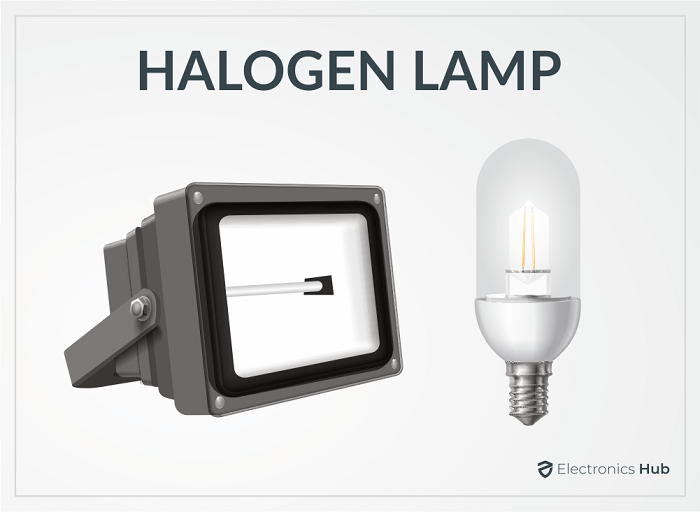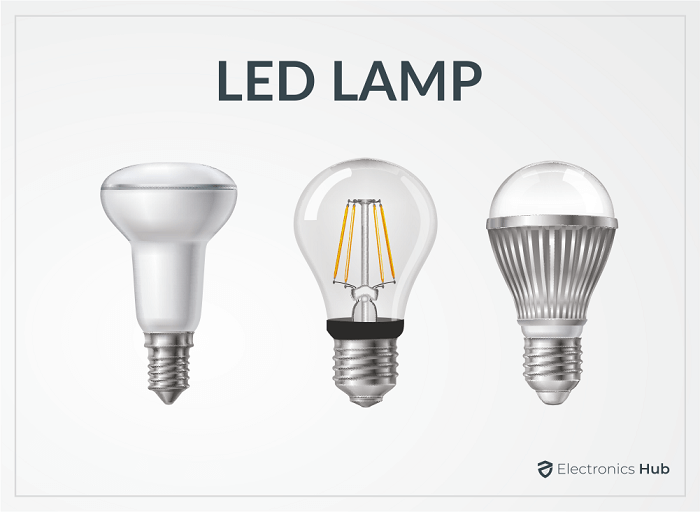Halogens and LEDs are two of the most common sources of light or lamps used for both commercial and home settings. The lamps are the detachable light sources that are a part of the light fixtures that convert the electrical energy to emit light. Each kind of lamp is capable of producing different qualities of light in various colours and shades. They also differ in terms of efficiency.
Halogens are a kind of incandescent lamp with filaments inside a compact glass envelope surrounded by halogen gas. LEDs, on the other hand, are the most popular kind of lamp around the globe. They are used everywhere from warehouses to streets and from homes to offices.
Outline
ToggleWhat is Halogen?

Also, similar to an incandescent lamp, these lamps use a tungsten filament. The quartz envelope allows the compact size as any kind of glass would melt being so close to the filament. They are suitable for accent lighting. The pin base of halogen bulbs restricts their use to certain fixtures that are specially designed for this bulb type.
The Pros
- They are similar to usual sunlight and can penetrate fog.
- Halogens have a low initial cost.
- They are not dazzling.
- Suitable for outdoor usage.
The Cons
- They emit a considerable amount of heat.
- They are prone to fire hazards.
- Halogens consume more power.
- The filaments break easily.
What are LEDs or Light Emitting Diodes?

Just as the CFLs or the Compact Fluorescent Lamps steadily replaced incandescent lamps, they are paving the way for LEDs. However, the concept of LEDs is not new. They have been around since the 1900s in several electronic devices but quite recently they have been revolutionised as energy-saving and high-powered LEDs have made their way to our home and office light settings and introduced them to the mainstream business.
The Pros
- They are highly durable.
- LEDs are available in a variety of shapes and colours.
- They are reliable.
- They are suitable for colder places.
The Cons
- They have a high initial cost.
- They can suffer damage due to high voltage.
- Not suitable for large areas.
- They cause backward best dissipation.
LED vs Halogen: Comparison Chart
| LED lamps | Halogen lamps |
| LEDs are semiconducting devices that emit light by allowing electric current to flow through them. | Halogens are a kind of incandescent lamp surrounded by halogen gas with tungsten filaments in a compact quartz envelope. |
| They usually have a CRI reading of 80 but the high-end models can notch it up to 98. | These lamps have a CRI reading of 100, which is the same as standard daylight. |
| LEDs have an expected lifespan of 50,000 hours which equals 13.5 years. | Halogens have a low expected lifespan of around 3,000 to 3,500 hours which is around 1 year. |
| The initial cost is higher than halogens. | The initial cost is lower than LEDs. |
Difference Between Halogen and LED
There are quite a few differences between LED and Halogens. In the following section, we will compare them based on some of their features.
1. Basics of LED and Halogen
LEDs are semiconductors which allow an electric current to flow through them and produce light in the process. They are available in various sizes and shapes. So, technically speaking, they are diodes that emit light by allowing current to pass through them in a single direction. Based on the semiconducting material, the light can vary from infrared to any colour from the spectrum.
On the other hand, halogen lights are a different take on the incandescent lamps that use the filament surrounded by gas in a small compact glass envelope. They use a tungsten filament like the incandescent lamp but they are much more compact.
2. Efficacy of LED and Halogen
This feature is expressed in the unit lumens per watt. It is the ratio between the light produced to the energy consumption. In layman’s terms, it is the amount of visible light produced by the light source or the lamps.
So, commonly a 100-watt halogen bulb would produce 1,750 lumens of visible light so it gives an efficacy of 17.5, whereas any common 15-watt LED bulb would produce 1400 lumens of visible light which make its efficacy an impeccable 93. The higher efficacy indicates that more light is produced with the same amount of energy.
3. Colour Rendering Index of LED and Halogen
CRI or Colour Rendering Index has a range from 0 to 100. The lamp basically can render colours similar to the reference lamp type. A CRI reading of 100 is for a 100-watt bulb. The ideal CRI for home lighting is from 85 to 90. Halogen bulbs equal a CRI of 100 which is similar to the sunlight while LEDs are not so bright and have a general CRI of 80. However, some higher-quality LED bulbs have a CRI going up to 98.
4. The Lifespan of LED and Halogen
The lifespan of the lamps ranges from 750 hours to 100,000 hours, usually based on the type of lamp. However, there are other factors like brands and types of use that affect the lifespan of these lamps. The durability of the LEDs along with their higher efficacy makes them a better investment for the long run. They have an expected lifespan of around 50,000 hours. On the contrary, halogen lamps consume more power than LED bulbs. They are durable for 1 year which is nothing compared to the 10+ years of the durability of the LEDs.
Conclusion
LEDs and Halogens are the two most common types of lamps. Through several sections of the article, we have found LEDs have an edge over halogens in case of many aspects. Also, the durability combined with the highest efficacy makes the LED lamps better than halogen bulbs in more ways than one.
Which is better: LED headlights and Halogen headlights? So, LED headlights are capable of producing brighter white lights compared to the yellow lights by halogens. Moreover, they have a longer lifespan, require less power and emit less heat than halogen lights. So, LED headlights are typically ahead in almost all aspects.

